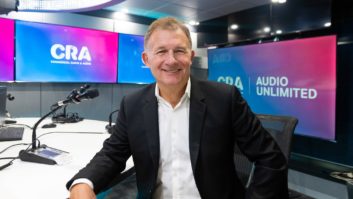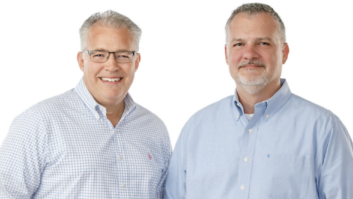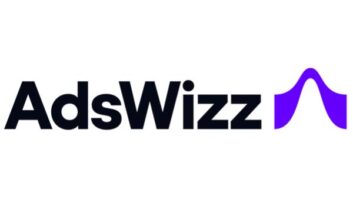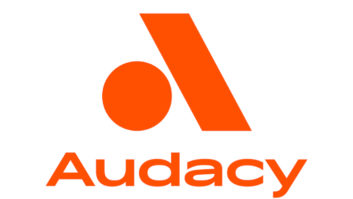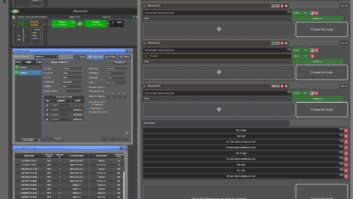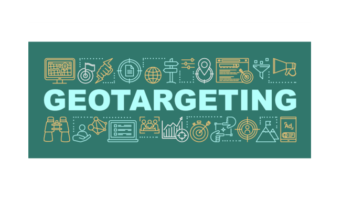(click thumbnail)Dave Robbins, digital director of programming, CBS Radio. ‘We are looking at a blank canvas.’NEW YORK
Radio broadcasters have invested millions in HD Radio deployment but are taking baby steps to make their multicast channels profitable.
The HD Digital Radio Alliance, a joint initiative of broadcasters trying to accelerate the rollout of digital radio, last fall relaxed rules prohibiting its member stations from running commercial material on their multicast channels.
Commercial-free HD Radio was seen as an incentive for potential listeners to purchase early HD-R receivers, the group said.
Alliance members since the first of the year have been allowed to air commercial announcements on their HD2 and HD3 stations similar to the non-commercial radio model of sponsorships and underwriting, said Peter Ferrara, president and chief executive officer of the HD Radio Alliance.
Specifically, alliance members are allowed to sponsor IDs, mentions and name in title only, according to official guidelines. Broadcasters’ multicast channels are limited to four 10-second breaks per hour.
“We are not necessarily tracking such things, but it is happening,” Ferrara said. “We’re just not sure at what revenue level this is happening.”
‘Natural progression’
Non-alliance members are free to sell advertising time on their multicast channels provided they adhere to FCC rules covering decency and commercial advertiser identification.
HD Radio Is Boom for Program SuppliersWith broadcasters rolling out multicast channels, demand for programming and other on-air products and services is growing — at least if activity among content suppliers is an indication.
ESPN Radio launched its ESPN HD Radio network in June to coincide with coverage of the UEFA Euro 2008 soccer tournament.
It and other program suppliers have seen a jump in interest from programmers looking to fill schedules on their HD2/3 multicast channels, said John Fitzgerald, vice president of advertising sales for ESPN Radio.
“Station groups are starting to figure out this new technology and realizing there is a lot of opportunity in terms of what they can serve to the consumer.”
ESPN Radio has 500 radio affiliates that carry all or part of ESPN’s daily offerings. Nearly 75 of those stations are FM broadcast stations.
“The greatest level of interest is coming from our AM affiliates that have FM stations in the same cluster,” Fitzgerald said. “A lot of those FM subchannels could very well be ESPN affiliates.”
Fitzgerald described ESPN HD as a network with an array of programming, with not only regular ESPN Radio offerings but also live play-by-play those stations can program.
“They can choose from sports content on the ESPN HD menu.”
Fitzgerald said the network launched with a “limited” number of FM affiliates carrying the HD content in June, but he expects that number will increase throughout this year.
In addition to programming, those FM multicast channels need imaging and jingle packages. TM Studios President David Graupner says it appears broadcasters are freeing up more money to purchase his company’s products.
“We are working more and more on specific imaging packages for HD2 stations,” Graupner said.
In addition to jingles and production libraries, multicast channels are looking for specific music libraries with some very deep tracks, Graupner said.
“Many broadcasters are going outside the mainstream of what you would consider traditional radio. And that’s a good thing.” Observers said the alliance’s recent changes are part of a natural progression from commercial-free service to a revenue model. The HD-R multicast rollout is young and this adds to the complexity of when to run commercials and how many.
The HD Radio Alliance comprises Clear Channel Radio, Beasley Broadcast, Citadel Broadcasting, Greater Media, Entercom, Bonneville International, CBS Radio, Emmis Communications and Cumulus.
Ferrara said CBS, Clear Channel and Emmis have engaged in some form of underwriting-like mentions and accepted advertising dollars on their multicast channels.
Several companies failed to respond to RW’s interview requests. A survey of some alliance members shows most are remaining patient when rolling out HD2/3 sponsorships. Other broadcast groups contacted by RW remain cautious about sharing information about their multicast advertising plans.
One broadcast executive said he “doubts if anyone has made great strides to generate much revenue” to this point and are “simply not saying much” about the process.
“People are concerned because they don’t want to make it sound like they are not supporting HD, nor do they want it misconstrued that since there haven’t been great success stories yet that this is a flawed space for us,” the corporate executive said. “That’s not the case. It’s just early in all of this.”
Most broadcasters contacted for this article readily state that they are not rushing their multicast channels to produce a revenue stream.
“We don’t have anything imminent, but if the right opportunity arose, we would consider selling to a fitting partner following the alliance guidelines,” said Pat Paxton, senior vice president of programming for Entercom.
‘No comp’
Clear Channel has announced several HD2 sponsorship agreements with Verizon for underwriting on the broadcaster’s multicast channels, according to a company press release.
Emmis Communications is selling advertising on its St. Louis HD2 stations on a “very limited basis,” said Dean Mutter, vice president/director of sales for the Emmis cluster in St. Louis.
“We were excited to be one of the first, if not the first, to monetize” an HD2 channel, he said, referring to KSHE(FM)’s multicast outlet KSHE2 Classic. “We aired our first underwriting sponsor in February. We are keeping the commercial inventory low and using only the underwriting model right now.”
Mutter said advertisers are still curious about how HD digital radio works and waiting to take a “wait and see” position since broadcasters have no way to right now to quantify their HD2 listening audience.
Rick Feinblatt, vice president of radio for Greater Media, said, “We have started the process in all of our markets. We won’t do any comp. We have learned from our interactive Web sites that you cannot comp it.” Complimentary ads are no-charge advertisements that broadcasters may provide clients for various business reasons.
CBS Radio is “selling great ideas on HD to further brand their products,” said Dave Robbins, the broadcaster’s digital director of programming.
It is launching formats and platforms on HD2 and HD3 that are consumer-friendly and advertiser-integrated and follow the alliance’s guidelines, Robbins said.
“Since HD is in its early stages, this offers advertisers a tremendous opportunity for ownership. We are looking at a blank canvas that we can literally produce anything we want for them,” Robbins said.
No broadcast group contacted for this story would estimate what it is charging for underwriting credit.






